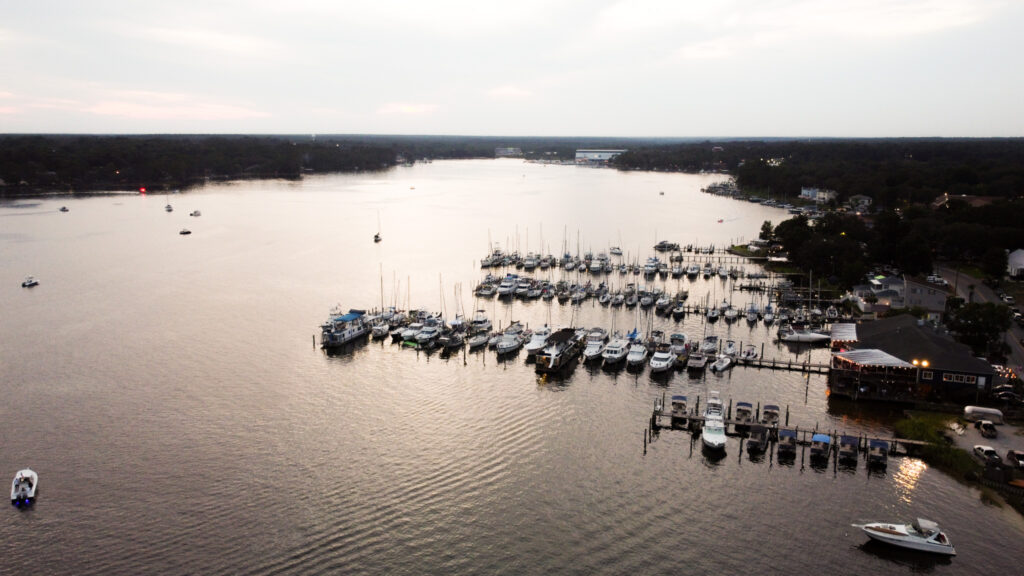
About two weeks ago heavy rain ended up sending two boats in questionable condition to the bottom of Boggy Bayou.
Since then – there has been plenty of ire toward the owners of the boats. Monday night (13 June), former Valparaiso City Commissioner Neal Shermer came to the commissioners with a plan to take care of the problem. He says his plan would ensure that:
Shermer’s plan received plenty of criticism from sitting commissioners and city staff. Still, Shermer believes it is the way to solve the environmental and financial problems abandoned boats in the bayous around Valparaiso and Niceville present to area citizens.
He says that the cost of abandoning a boat is much lower than storing or scrapping it – so many elect to tow their old boat into the bayou and let it sink.
“The problem has grown due to economics. In our current system,” Shermer said, “There is a system in place for disposing of derelict vessels through the Florida Statutes, but it’s the system that’s failing us on average. These folks will sit there a year before they are done with, but even if they sit there for a day, the aforementioned pollution has already taken place.”
Indeed, Shermer intimated, there are at least seven or eight other boats in Boggy Bayou that look suspiciously like they have been abandoned and are just waiting to sink after the next storm.

Shermer’s plan would designate Boggy and Tom’s Bayou as limited anchorage areas – a plan requiring a joint ordinance with the Niceville City Council.
This designation would require boat owners who want to anchor in the bayou for more than six hours (or whatever amount of time the cities designate) to submit an application with the following information:
Additionally, Shermer said, the commission and the Niceville City Council could pay for enforcement of the ordinances through a pay-for-permit scheme that would cover the removal costs.
The idea behind the permitting process and the limited anchorage would be to ensure accountability of the owners for boats, should they sink – and ensure that the taxpayer doesn’t end up on the hook for the removal.


Additionally, thanks to changes that Shermer says have taken place in state statute, all law enforcement officials, not just FWC, can declare a boat derelict and start removing an offending vessel from the water.
Operations like this would probably mean the Valparaiso Police Department would need a boat. “[Chief Hart] rolled his eyes when I said this as a joke the other day,” Shermer continued, “but the last thing is we may need to consider a police boat of some sort.”
Getting a boat would require an already short-staffed police department in Valparaiso to come up with the manpower and boat money to fund a marine unit. An idea Police Chief Joe Hart was, to put it mildly, not excited about. He explained to the commission that signs would have to be put out on the bayou and maintained. Additionally, the cost of the boat would be an issue.
“You’re adding another responsibility,” Chief Hart said, “Right now, I’m still people short. I don’t have enough bodies to go into patrol cars I’ve got.” Hart continued, “I’m not making excuses. If you are willing to find me the bodies and the money, I’ll go and do whatever is asked of me. I’ve always been a team player. But this is an expensive venture and you know, we have had an excellent response from the county water patrol in the past.” He added, “The choice is yours, you’re our city fathers.“
Fire Chief Tommy Mayville noted the urgency of the matter – especially as it relates to the distribution of gasoline for cars and trucks in the region. “Eight million gallons of gasoline comes through that station [on Boggy Bayou],” Mayville said. He added that the derelict boats, should they cause a barge trouble could mean supply issues for the entire region when it comes to getting gasoline for cars.

Several individuals on the commission and the city staff had some pause with the plan. Several, including Commissioner Kay Hamilton, Mayor Brent Smith and City Administrator Carl Scott voiced various reservations about the plan. Mayor Smith and Commissioner Hamilton argued that a lot of the enforcement power is outside the city’s jurisdiction. Funding for vessel removal is assigned to the counties of the State of Florida, and the state requires that monies for boat removal get spent through the county. Once they are tapped, the state steps in for removal costs – but it can be a long slog to get the boats removed.
City Administrator Scott noted that it took a couple of years in the late 2000s to get rid of a derelict barge due to the owner’s property rights. “I do see both sides of the issue, Scott told the commission and Shermer. “When I first came here in 2009, it took me one and a half years to get rid of that Grunger barge from T pair and I worked on it constantly. I hated that barge. And I’m sure that Mr. Grunger hated me because eventually he had to go remove it from our Bayou. .. Just a really, really long process.” In an argument similar to Chief Hart, Scott noted FWC and other agencies have a process in place. He did add the city could find a way to streamline the process so that it takes less than a year to get an offending vessel out of the water.
After a lengthy discussion about what the city should do about the boats – the Mayor motioned that the city task Commission attorney Hayward Dykes and his law firm Hand, Arendall, Harrison, Sale to determine what could be done about the situation from the city of Valparaiso’s position.
Register or login with Mid Bay News and never get another pop up on our site!